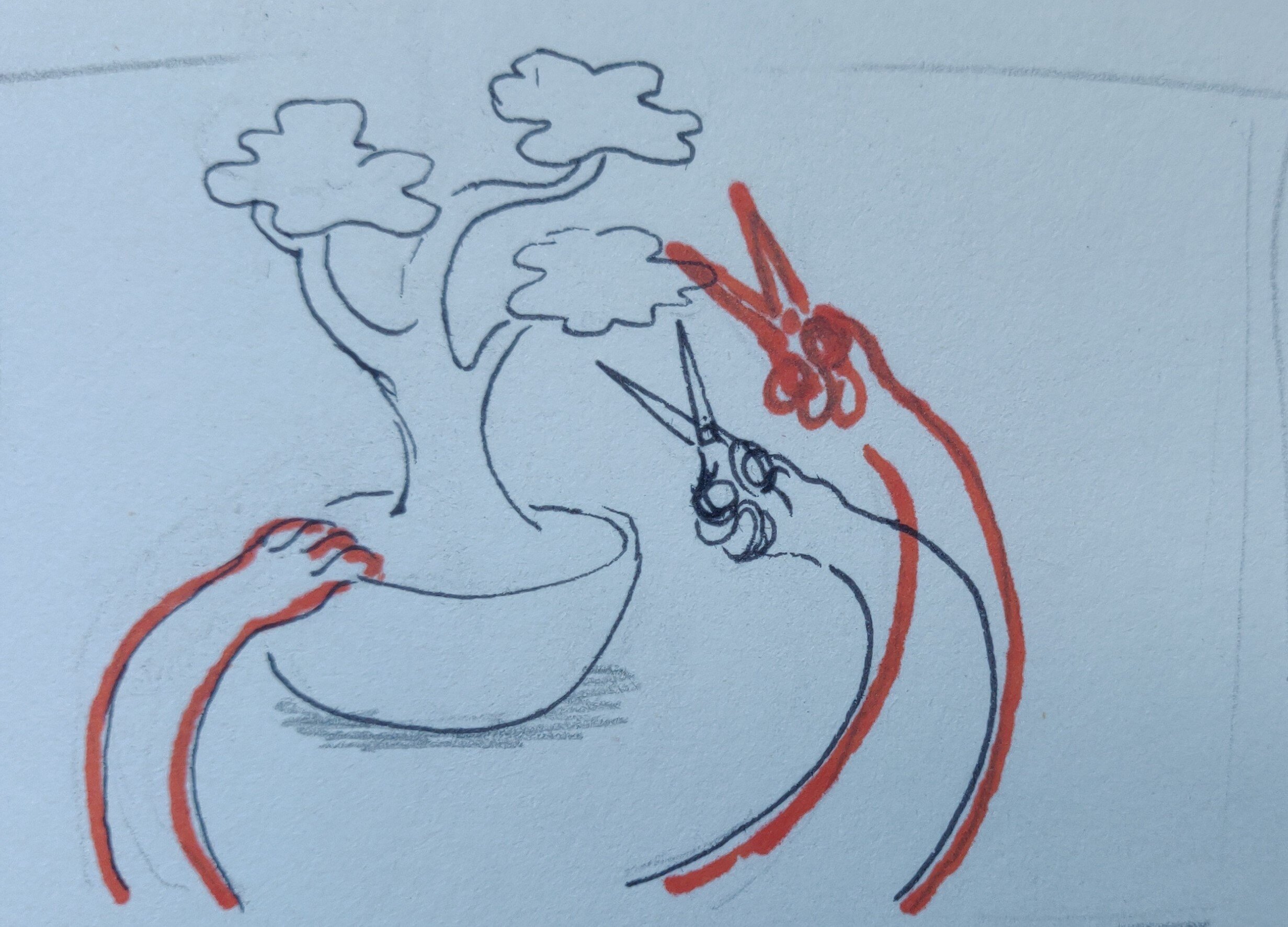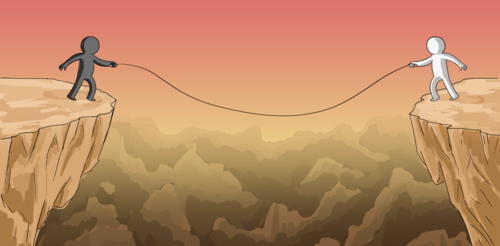In this series of blog posts, we will take you through the creative process behind Kinesics. This artistic research project explores the future role of body language in Virtual Reality. This is the eight post in a series of ten.
Our third prototype was based on creating a situation of shared ‘flow’ in movement. This is where both players are moving in unison, they are so well connected that they can anticipate each other’s movement and stay in sync. A great practical example of this is the way dancers guide each other in couple dancing. During dancing, both bodies are in sync - one follows the other. The guiding dancer can easily and fluently shift from leader to follower, as they can sense the other’s motions.
Blade Runner 2049 - Allstar/Warner Bros
We translated the idea of syncing body movement to a design in which two players stand in exactly the same spot, but in different dimensions. They can see the transparent shape of the other player. The ultimate goal is to move together, as one. This was heavily inspired by the amazing love scene in BladeRunner 2049 (see above). We wanted to create situations in which players performing shared movements could feel subtle changes in the other's body language in order to execute the movements successfully. By facilitating space for these subtle changes, players could anticipate each other’s movements while still being in sync.
The original idea was to let players cut a bonsai tree together. But, they can only hold the scissor while their hands are both in the same place. If their hands are in different places, then they become ghostly, which results in dropping the scissors. We hoped to create this slow meditative embodied experience where you both carefully move from branch to branch, choosing to trim exactly the same branches, by paying attention to each other’s subtle hand movements. Like, which branch both players go to next, who leads, and who follows. We hoped this would facilitate the fluid shifting in leading and following that you see in couple dancing. However, before we could make the bonsai idea, we started with making a more open ended playroom in which we could experiment
different actions (see the video below).
Lesson learnt
Rhythm = flow! We quickly realised that what we were missing in our concept was music or, at least, a rhythm. In both couples dancing and rope skipping players have a rhythm to focus on. Because they both follow the same rhythm it is far easier to synchronise movement. Without rhythm, or some other form of external context it is far more difficult to predict each other’s movements, as there are no clues. We debated adding rhythm, but voted against it because the experience would quickly become a dancing or rhythm game, which was not the topic we wanted to explore.
Lessons learnt
We initially looked at avatars that would only fully materialise if both players were aligned. We wanted to see how this would feel if you need to pour a cup of tea or clip a bonsai tree by moving in exactly the same way - this was hard, but doable. Interacting with moving objects proved far to frustrating. It’s almost impossible to coordinate and anticipate each other’s movement if you are dealing only with moving objects. Even picking up a simple ball together was frustrating, as you have to reset every time you lose sync and the ball drops to the floor and rolls away. We quickly realised our original ideas were too complex or frustrating to achieve.
Decisions made
We did some further explorations with some simple tasks:
Making blocks disappear when you touch them in sync. This seemed to work, and you could even adjust it depending on the amount of synchronisation.
Drawing a line in space when both hands are in sync. In this case we also added audio feedback to help find and maintain sync - this improved the ease of use.
Lessons learnt
We discovered that synchronising body movement needed a lot of tuning and visual feedback design, especially to create the subtle nuances that were needed. As a result, it was hard to find a feeling of gratification. This could have been remedied with more fine tuning and polishing time. But, this project is about experimentation, so we decided not to develop this idea into a full prototype.
In our next post we’ll talk about our the design of the unscheduled fourth prototype ‘Copy Paste Dance’. This research was a collaboration with ImproVive and funded by Creative Industries NL.



